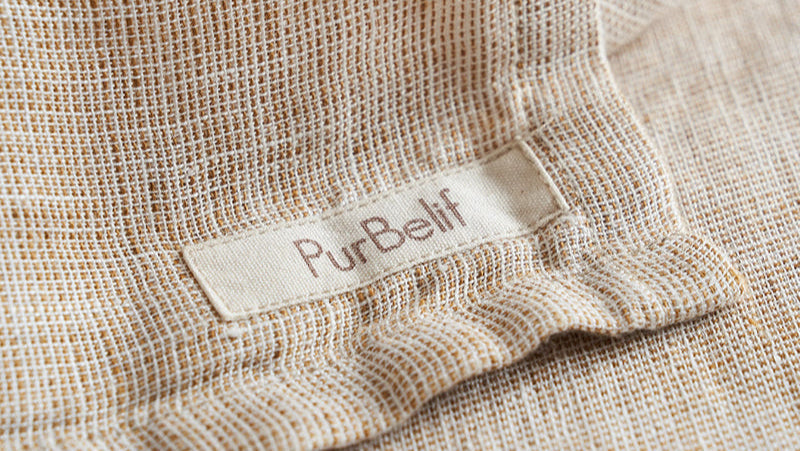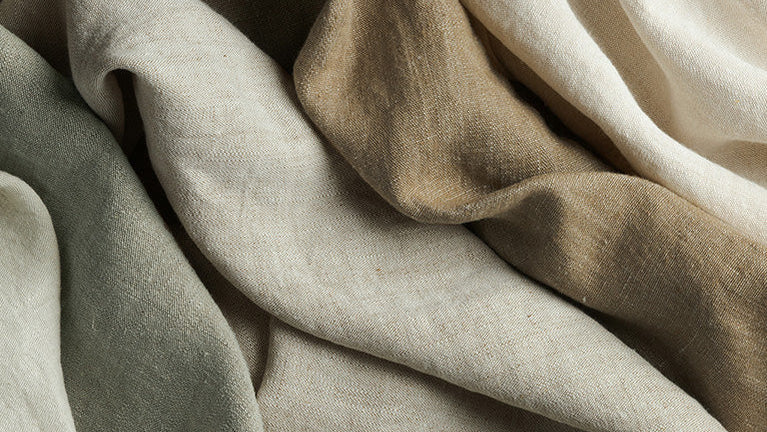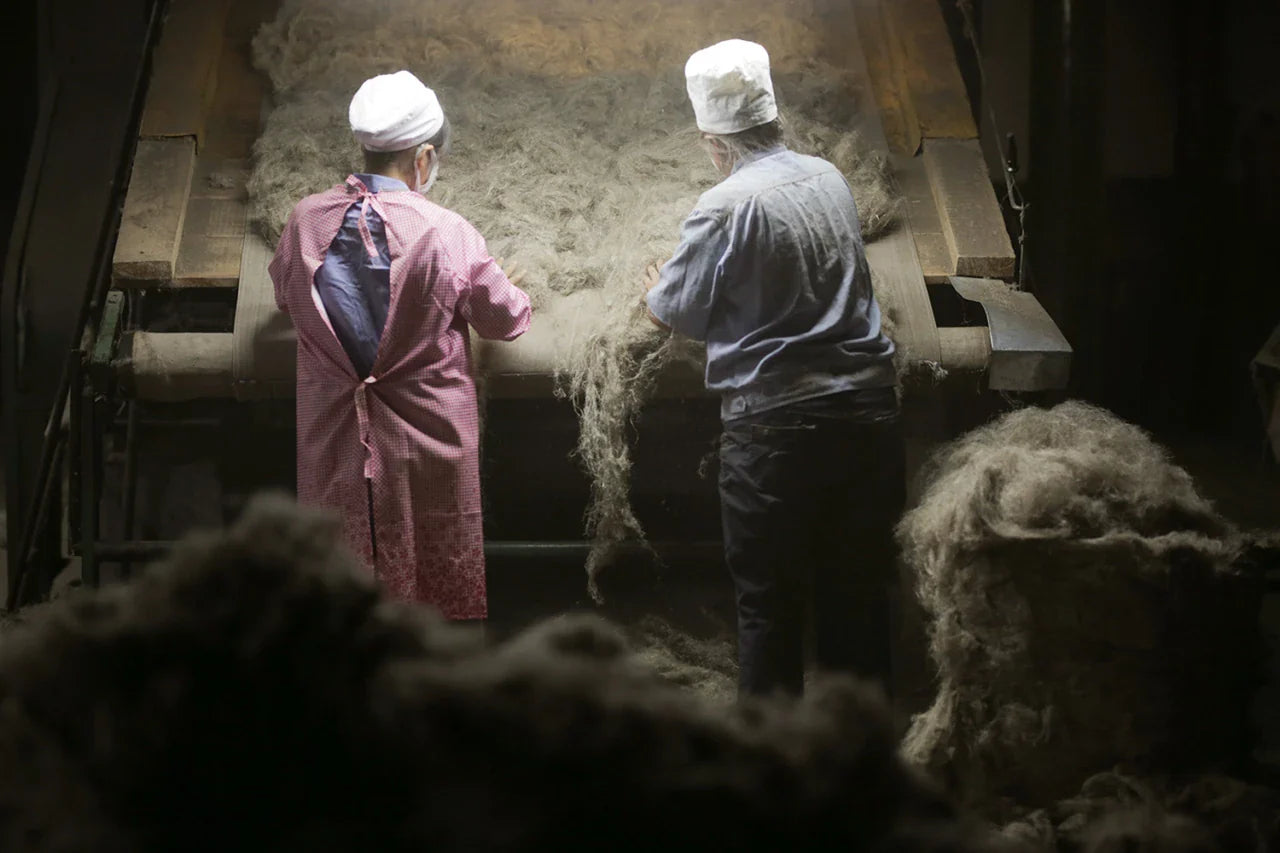How Fabric Frequencies Support Healing and Wellbeing?

When we think of fabrics, we often focus on their texture, durability, or environmental impact. Yet, recent research suggests that the materials we surround ourselves with have a deeper, unseen influence on our lives: their vibrational frequencies. In 2003, Dr. Heidi Yellen's groundbreaking study into fabric frequencies has opened a new perspective on how what we wear—and even sleep on—can affect our energy, wellbeing, and even healing.

What Are Fabric Frequencies?
At a fundamental level, everything in the universe vibrates at its own unique frequency, including the clothes we wear. These vibrations are often imperceptible to us, but they can influence our energy and health. According to Dr. Yellen's research, a healthy human body vibrates at a frequency of around 100, a very sick human frequency is 15. Fabrics with higher frequencies are believed to energize and support the body, while those with lower frequencies may drain energy or disrupt balance.
Linen & Wool: The Natural Healers
Among all fabrics studied, linen and wool stand out as the ultimate high-frequency materials, each resonating at an astonishing 5,000. This far exceeds the human body's frequency, suggesting their potential to impart energy and vitality to the wearer. Linen, in particular, has a rich history of being revered for its healing properties. Known for its natural resistance to bacteria and fungi, it has been used for centuries in bandages, bed linens, and clothing to promote recovery and health. Patients wearing linen post-surgery have reported faster healing and less pain, underscoring its restorative properties.
Wool, often associated with warmth and comfort, also resonates at 5,000, providing more than just physical coziness. On a vibrational level, it can energize the wearer. However, an intriguing finding of the study reveals that when wool and linen are worn together, their opposing energy flows cancel each other out, reducing their frequency to zero.
Fabrics That Mirror the Body: Organic Cotton and Hemp
Organic cotton, with a frequency of 100, aligns perfectly with the human body's natural frequency. This harmony makes it a neutral, soothing choice that supports overall wellbeing. In contrast, non-organic cotton vibrates at 70, lacking the same energetic alignment.
Hemp, another natural fiber, shares the same frequency as the human body at 100, but its benefits go beyond vibrational harmony. As one of the most sustainable materials available, hemp enriches the soil, requires no pesticides, and has a carbon-negative footprint. Its antibacterial, durable, and UV-resistant properties make it an ideal choice for both personal and environmental health.
Silk: A Surprisingly Low-Frequency Fabric
Silk is renowned for its luxurious texture, yet in Dr. Yellen's study, it exhibited a surprisingly low frequency of 10. This unexpectedly low frequency may be linked to the chemical treatments commonly used in modern silk production.
Traditional sericulture demands significant resources, including water, land, and energy. Moreover, the silk production process often involves the use of chemicals such as pesticides and insecticides. Ethical concerns also arise, as silkworms are typically killed during the harvesting process. While "peace silk" (a cruelty-free production method) is gradually gaining attention, it has not yet been widely adopted.
Additionally, the energy-intensive processing of silk further diminishes its sustainability, leaving it behind more eco-friendly alternatives like organic cotton, linen, and hemp. Although efforts are being made to improve silk’s environmental footprint, it still lags in both sustainability and ethical considerations compared to other natural fibers.
Low-Frequency Fabrics: Energy Drainers
Rayon, with a frequency of 15, made from chemically processed wood pulp or bamboo, also presents vibrational and environmental concerns, highlighting the need for more sustainable alternatives.
Synthetic fabrics such as polyester, acrylic, spandex, and nylon have a frequency of 0, offering no vibrational benefits and potentially draining energy. These petrochemical-derived materials are not only taxing on the environment but also fail to harmonize with the human body’s natural energy.
The Role of Dyes in Fabric Frequencies
While the natural properties of fabrics play a significant role in their frequencies, dyes can also influence their vibrational qualities. Synthetic dyes, often laden with chemicals, may alter or diminish a fabric’s natural frequency. In contrast, natural dyes, derived from plants and minerals, are more likely to preserve or even enhance a fabric’s inherent vibrational properties, aligning better with the body’s natural energy.
Dr. Yellen’s research reminds us that fabrics are more than just materials—they are extensions of our energy and wellbeing. By choosing natural, high-frequency fabrics, we can foster harmony between ourselves and the environment, supporting both personal and planetary health. As we embrace this hidden harmony, each thoughtful fabric choice becomes a step toward a healthier, more balanced life.



